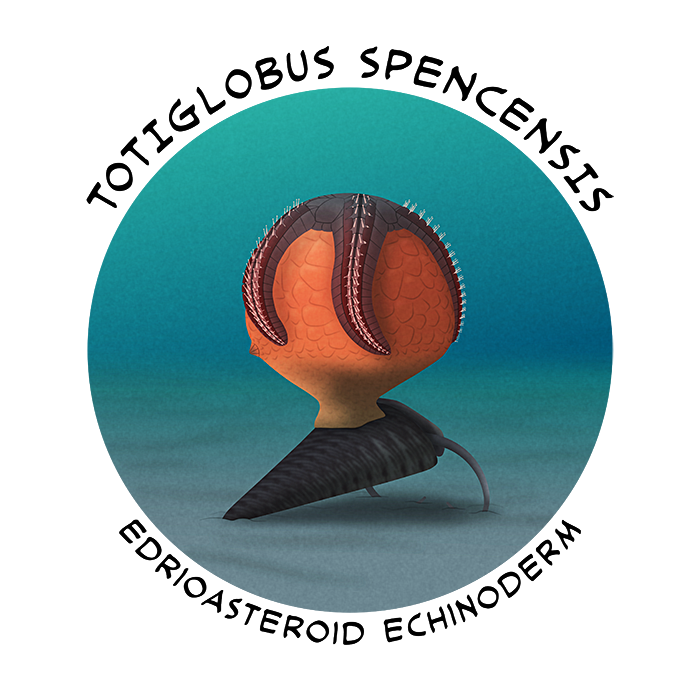It seems like echinoderms became five-way symmetric incredibly quickly following the group’s first appearances in the early Cambrian. We don’t really know why this secondary radial symmetry evolved in the group – but we do know that the common ancestors of all modern pentaradial echinoderms were suspension-feeding animals that lived attached to the sea floor.
And those ancestors were probably a group called the edrioasteroids.
Edrioasteroids looked like discs or pillows with a starfish stuck on the top (although a few later forms resembled turrets), and they lived permanently attached to either the seafloor sediment or to hard surfaces like rocks and shells. Their five arms could grow straight, curved, or spiralling over the top surface of their bodies, and they captured food particles from the water using tube feet.
They first appeared in the fossil record at around the same time as helicoplacoids, about 525 million years ago, and were either ancestral to all modern echinoderms or to everything except crinoids (depending on whether eocrinoids and blastozoans were related to true crinoids or not).

Camptostroma roddyi was an unusual early edrioasteroid that resembled a cupcake, known from Pennsylvania, USA, around 516-513 million years ago. Growing up to about 6cm in diameter (2.4″), its wide thick base helped it suction onto soft sediment and algal mats.
Most other early edrioasteroids were also soft-surface suction-stickers, but later in the Cambrian microbial mats became less common and members of the group began to specialize for attaching to hard surfaces instead.

Totiglobus spencensis was one of the first species to use hard surfaces, living in Idaho, USA, about 509-504 million years ago. The only known specimen was about 2cm in diameter (0.8″), and was found attached onto a hyolith shell – possibly with the aid of a bioglue – with its position and the completeness of the hyolith suggesting it had been growing on a living host until they both got buried in sediment and preserved.
A very closely related species, Totiglobus nimius, was still a soft-sediment-sticker, and the two had differently shaped basal regions of their body – T. nimius had a wide flat attachment surface, while T. spencensis had a conical tapering base that ended in a smaller attachment disc.
While edrioasteroids were never particularly common echinoderms, they were still widespread around the world and surprisingly long-lived as a group – they actually continued on through most of the Paleozoic, with their last known fossils coming from the Mid-Permian about 270 million years ago.
And, of course, if early edrioasteroids were the ancestors of modern echinoderms then their descendants are still going strong today. Even now, half a billion years later, some modern echinoderm larvae still may show some traces of that ancestry, attaching themselves onto the seafloor before metamorphosing.
